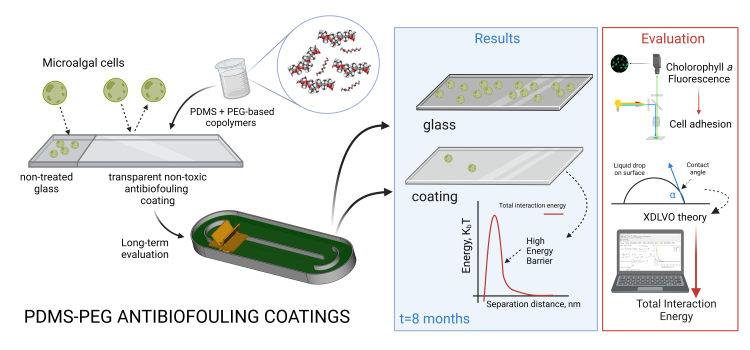Long-lasting biofouling formation on transparent fouling-release coatings for the construction of efficient closed photobioreactors
Abstract :
In order to build an efficient closed-photobioreactor (PBR) in which biofouling formation is avoided, a non-toxic coating with high transparency is required, which can be applied to the interior surface of the PBR walls. Nowadays, amphiphilic copolymers are being used to inhibit microorganism adhesion, so poly(dimethylsiloxane)-based coatings mixed with poly(ethylene glycol)-based copolymers could be a good option. The 7 poly(dimethylsiloxane)-based coatings tested in this work contained 4% w/w of poly(ethylene glycol)-based copolymers. All were a good alternative to glass because they presented lower cell adhesion. However, the DBE-311 copolymer proved the best option due to its very low cell adhesion and high transmittance. Furthermore, XDLVO theory indicates that these coatings should have no cell adhesion at time 0 since they create a very high-energy barrier that microalgae cells cannot overcome. Nevertheless, this theory also shows that their surface properties change over time, making cell adhesion possible on all coatings after 8 months of immersion. The theory is useful in explaining the interaction forces between the surface and microalgae cells at any moment in time, but it should be complemented with models to predict the conditioning film formation and the contribution of the PBR’s fluid dynamics over time.
Keywords :
Biofouling, marine microalgae, XDLVO theory, transparent fouling-release coatings, Nannochloropsis gaditana



